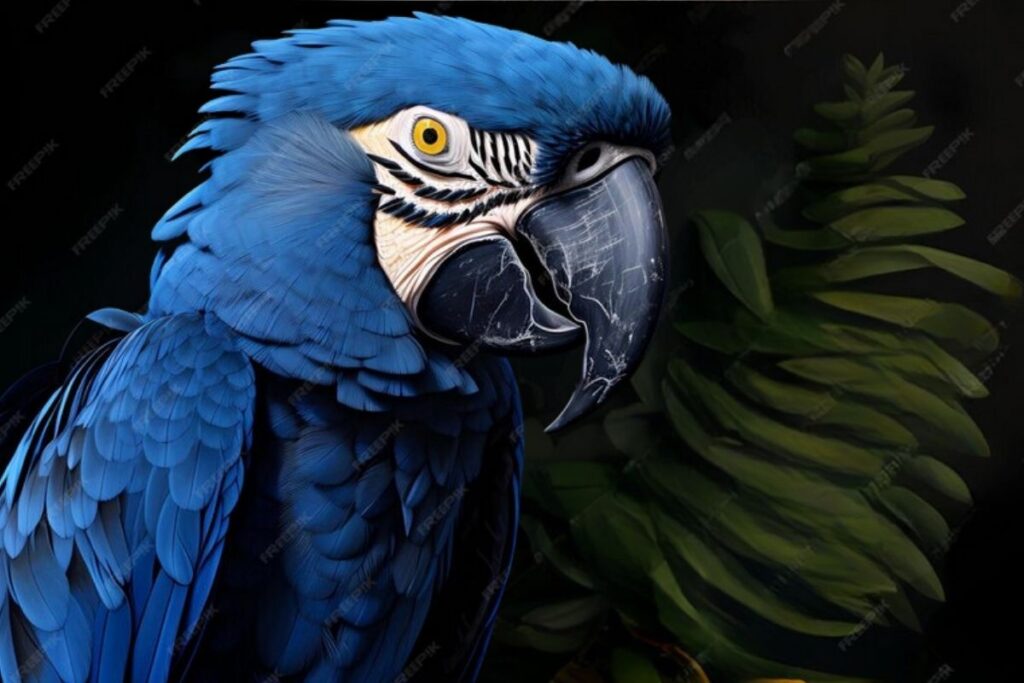
As araras azuis são aves magníficas que cativam a todos com sua beleza e personalidade encantadora.
Hoje, exploraremos algumas Curiosidades Arara Azul sobre como essas aves são impressionantes e fascinantes.

Desde sua aparência deslumbrante até seus hábitos interessantes, você aprenderá mais sobre a vida e o mundo das araras azuis.
As araras azuis são conhecidas por sua deslumbrante plumagem azul, que é um espetáculo para os olhos.
Mas o que torna essa coloração tão especial?
A resposta está nos pigmentos únicos encontrados nas penas dessas aves.
O azul vibrante das araras é resultado da interação entre a estrutura das penas e a maneira como refletem a luz.
Isso cria um efeito brilhante que é verdadeiramente incomparável na natureza.
Além do azul, as araras também apresentam detalhes incríveis em sua plumagem.
Por exemplo, suas asas são adornadas com manchas amarelas e vermelhas, criando um contraste deslumbrante com o azul dominante.
Esses detalhes não apenas aumentam sua beleza, mas também têm um papel importante em sua camuflagem na natureza, ajudando-as a se misturarem ao ambiente da floresta.
Araras azuis são criaturas sociais e vivem em grupos familiares chamados de “bandos”.
Esses bandos podem ser compostos por várias araras e têm uma hierarquia clara.
A comunicação é essencial para manter a coesão do grupo, e essas aves têm uma série de vocalizações distintas que utilizam para se comunicar.
Uma Curiosidades Arara Azul interessante é que elas são monogâmicas, formando laços fortes com um parceiro para a vida.
Eles compartilham tarefas como encontrar alimentos, construir ninhos e cuidar dos filhotes juntos.
Esse comportamento de acasalamento monogâmico é uma parte fundamental de sua vida em comunidade.
Apesar de sua aparência majestosa, as araras azuis são onívoras e têm uma dieta variada.
Elas se alimentam principalmente de frutas, nozes e sementes encontradas nas florestas tropicais onde habitam.
No entanto, também são conhecidas por comer insetos e até mesmo pequenos vertebrados, como lagartos.
Um aspecto curioso de sua alimentação é a importância das palmeiras na dieta das araras azuis.
Elas têm uma preferência especial por sementes de palmeira, que são ricas em nutrientes.
Isso destaca a importância das palmeiras para a preservação dessas aves e de seus habitats.
Infelizmente, as araras azuis enfrentam ameaças significativas em seu ambiente natural.
A degradação do habitat devido ao desmatamento e à expansão agrícola é uma das principais preocupações.
Além disso, o comércio ilegal de aves exóticas representa uma ameaça séria para as populações de araras azuis, já que são alvos cobiçados por traficantes de animais.
A conservação dessas aves é crucial para garantir sua sobrevivência.
Muitos esforços estão sendo feitos para proteger seus habitats e combater o comércio ilegal.
Organizações de conservação trabalham incansavelmente para educar o público e promover a conscientização sobre a importância das araras azuis na biodiversidade das florestas tropicais.
As araras azuis são verdadeiramente fascinantes, desde sua aparência deslumbrante até seus complexos hábitos sociais e dieta variada.
No entanto, elas enfrentam desafios significativos em seu ambiente natural, tornando a conservação dessas aves uma prioridade importante.
Ao aprender mais sobre as araras azuis e apoiar esforços de conservação, podemos ajudar a garantir que essas aves espetaculares continuem a alegrar nossas florestas tropicais com sua presença majestosa.
Junte-se a nós nesse esforço para proteger essas incríveis criaturas e seu habitat único.